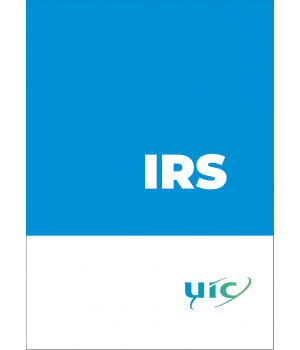
Guidelines for the implementation of RAMS analysis to mechanical components of railway vehicles
The International Union of Railways (UIC) develops and distributes International Railway Solutions (IRSs) in order to help railway stakeholders, achieve further harmonisation and collaboration.
The design, product and maintenance requirements of mechanical components of railway vehicles are defined in the relevant standards or technical specifications (e.g. ISO and EN Standards, IRSs, UIC Leaflets, Technical specifications provided by operators, manufacturers or any actor of the railway sector).
The EN 50126 approach is useful to identify and assess the effects of changes (e.g. use of new materials) on reliability, availability, maintainability and safety (RAMS) of the component.
The contents of this IRS are the result of the UIC project RELIABILITY AND SAFETY OF AXLES, WHEELS AND AXLE BEARINGS "Reliability, availability, maintainability, safety – Implementation of EN 50126 – for Mechanical Components in Railways" that was launched with the aim of calculating characteristic RAMS (reliability, availability, maintainability, safety) values as per EN 50126. The project considered various factors influencing RAMS, such as system, operating and maintenance conditions.
Findings from the UIC project "Stresses on Running Gear" (SOR), from the work did by the Joint Sector Group for the ERA Task Force on wagon/axle maintenance and from the EU project EURAXLES were also considered. The Projects were focused on the entire wheelset (i.e. axle, wheels, axle bearing and bearing housing as well as wheel/axle-mounted brake discs).
The applications of the RAMS and risk analysis methodologies on the wheelset and bogie are described in the UIC report B 169/RP 29 (see Reference documents - page 6).
This IRS proposes a methodology, guidelines and tools to carry out risk analysis and RAMS calculations consistent with EN 50126 in order to monitor the reliability, availability, maintainability and safety of mechanical components of railway vehicles. In this sense this IRS allows the user to perform the RAMS analysis for mechanical components by himself.
The results of the comparison between different risk analysis methodologies on the wheelset and bogie and the reasons for choosing FMECA and RPN as the parameter to characterise the criticality level of failures/events are set out in the UIC report B 169/RP 29.
In order to consider also economic requirements, in addition to the RAMS analysis, an LCC methodology was defined in the framework of the UIC project "Determining the reliability / safety of the running gear of railway rolling stock".
The LCC guidelines and the LCC tools are integrated in the IRS 80880-2 "Guidelines for the application of the Life Cycle Cost analysis to railway vehicles".
It integrates in full or in part the following UIC leaflets:
- none
It aims to complement the following standards:
- (see Reference documents - page 6)
| Author | UIC |
| ISBN | 978-2-7461-3115-6 |
| Pages | 36 |
Fiche technique
- Langage
- Anglais
- Format
- Téléchargeable
- Edition
- Ed. no.1
- Date d'édition
- 01/10/2021
- Date de publication
- 12/10/2021
- Nombre de pages
- 36
- Thème
- Rolling stock Matériel roulant
- sku
- 80881/E/1-PDF
- Reference
- 80881
 Préférences sur les cookies
Préférences sur les cookies

